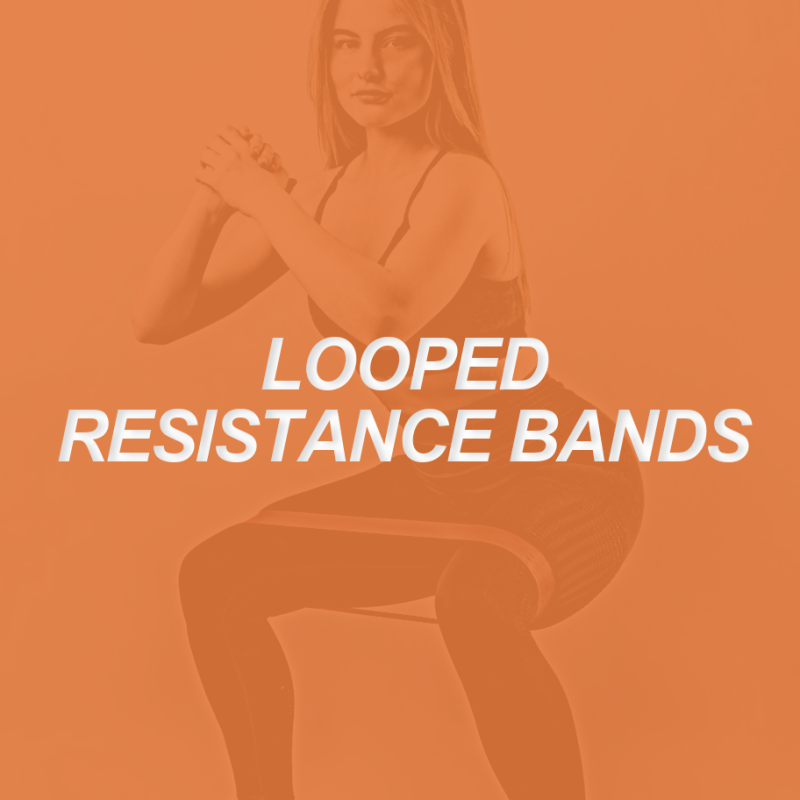
There are lots of types of exercise bands on the market. The tubed variety with handles offer many options, but plenty can be done with the flat, looped resistance bands as well. They offer unlimited options for storage, working out, and adding variety to exercise routines. Read on for endless ideas to use looped resistance bands with your clients.
Ultimate in Convenience
Resistance bands are probably the easiest type of exercise equipment to transport and store. You can easily travel with them as they take up virtually no space or weight. Take them to work and store in a desk drawer for breaks at the office. Pack them in a gym bag or pocketbook. Leave one in a dresser drawer at home.
These bands are inexpensive, so your clients might want to buy several to have in various locations. Prices range from under $10 to $30. They come in varying sizes with the smaller and thicker ones being more challenging since they provide the most resistance.
These bands provide a robust option for any workout. Show clients the versatility they offer and hopefully, they will take on the challenge to use them often.
Many exercises incorporate resistance bands–so much so that you can hold an entire training session only using this type of band for the workout.
While no single piece of equipment is a magic trick, bands rank high on the list due to their versatility, convenience, and low financial investment. One thing to bear in mind and elucidate for clients is the inherent property of increased resistance as the band stretches.
This means, for most exercises, the resistance increases at the end range of a motion, where most people are weakest. This is an opportunity to strengthen muscles in their end range, but contrarily, you are more likely to tire at this point. Here are some suggestions for upper body, lower body, upper, and lower body muscle groups simultaneously to engage the core, and ideas for stretching.
Upper Body
Strengthen the shoulders, biceps, tris, and the rest of the showy upper body muscles using looped bands.
- To simulate a rowing machine, place one end of the band under both feet and pull with the other end in a rowing motion. (Please use caution in anchoring the band or this can literally backfire and hit you in the face!)
- Perform overhead pull-aparts for lats holding the outside of the band and opening up the arms; hold in front of the chest to simulate a reverse flye.
- Do push-aparts with hands inside the band while palms face each other.
- Bow and arrow movements are ideal with a band.
- Try one-arm rows in a lunge position with one end of the band under the front foot while pulling with the other end.
- Seated bicep curls with a band braced under both feet offers another way to do curls.
- Tricep extensions work well with the added tension in the bands.
- Shoulder presses can be done on the floor with the body between the band and arms extending overhead.
- Steering wheels activate shoulder muscles.
Lower Body
Focus on the big lower body muscles, like the quads, hamstrings, glutes and more while working with the looped resistance bands.
- Perform donkey kicks with the band.
- Lateral walks with the band placed above the knees are a great way to activate the quads, glutes, and hip flexors.
- Place the band above the ankles, lying supine on the floor with legs extended overhead for pulses.
- Do clam shells with the band above the knees.
- Perform lying lateral leg lifts with the band above the ankles or knees.
- Standing abduction leg lifts with the band above the ankles or knees.
- Glute bridges utilizing the bands take glute activation to a new level.
- Add variety to squats and lunges.
- Banded fire hydrants work the hip abductors and external rotators.
- Wall sits will be more challenging with a band above the knees.
Core
Activate core muscles with some of these exercises working upper and lower body at the same time.
- Lying supine with legs extended overhead and a band around ankles, lift the upper body slightly and do leg circles in both directions.
- Add challenge to side planks with banded lateral leg raises.
- Use bands for straight or forearm planks.
- Try V-sits and V-ups with the band around ankles.
Stretching
Use the bands for dynamic and static stretching, A taut band allows for a deeper stretch on various muscle groups, including:
- Shoulders
- Hamstrings
- Calves and ankles
- Quads
- Wrists and forearms
- IT bands with cross-body leg stretches on the floor
References
https://health.clevelandclinic.org/should-you-try-resistance-bands-for-strength-training/
https://www.walmart.com/browse/sports-outdoors/resistance-bands/4125_4134_1078104_9133250
https://greatist.com/fitness/resistance-band-exercises#legs-and-glutes
https://my.clevelandclinic.org/health/body/21662-calf-muscle
https://www.prevention.com/fitness/workout-clothes-gear/g39590790/resistance-band-exercises/






